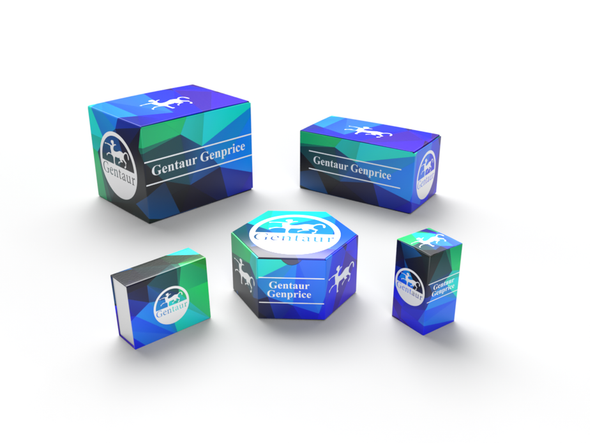Description
COX6A1 Antibody | 19-164 | Gentaur UK, US & Europe Distribution
Host: Rabbit
Reactivity: Human, Mouse, Rat
Homology: N/A
Immunogen: Recombinant fusion protein containing a sequence corresponding to amino acids 25-109 of human COX6A1 (NP_004364.2) .
Research Area: Neuroscience
Tested Application: WB, IHC, IF
Application: WB: 1:200 - 1:2000
IHC: 1:20 - 1:200
IF: 1:50 - 1:200
Specificiy: N/A
Positive Control 1: A-549
Positive Control 2: MCF7
Positive Control 3: Mouse kidney
Positive Control 4: Mouse heart
Positive Control 5: Mouse liver
Positive Control 6: Rat liver
Molecular Weight: Observed: 12kDa
Validation: N/A
Isoform: N/A
Purification: Affinity purification
Clonality: Polyclonal
Clone: N/A
Isotype: IgG
Conjugate: Unconjugated
Physical State: Liquid
Buffer: PBS with 0.02% sodium azide, 50% glycerol, pH7.3.
Concentration: N/A
Storage Condition: Store at -20˚C. Avoid freeze / thaw cycles.
Alternate Name: Cytochrome c oxidase subunit 6A1, mitochondrial, Cytochrome c oxidase polypeptide VIa-liver, Cytochrome c oxidase subunit VIA-liver, COX VIa-L, COX6A1, COX6AL
User Note: Optimal dilutions for each application to be determined by the researcher.
BACKGROUND: Cytochrome c oxidase (COX) , the terminal enzyme of the mitochondrial respiratory chain, catalyzes the electron transfer from reduced cytochrome c to oxygen. It is a heteromeric complex consisting of 3 catalytic subunits encoded by mitochondrial genes and multiple structural subunits encoded by nuclear genes. The mitochondrially-encoded subunits function in the electron transfer and the nuclear-encoded subunits may function in the regulation and assembly of the complex. This nuclear gene encodes polypeptide 1 (liver isoform) of subunit VIa, and polypeptide 1 is found in all non-muscle tissues. Polypeptide 2 (heart/muscle isoform) of subunit VIa is encoded by a different gene, and is present only in striated muscles. These two polypeptides share 66% amino acid sequence identity. It has been reported that there may be several pseudogenes on chromosomes 1, 6, 7q21, 7q31-32 and 12. However, only one pseudogene (COX6A1P) on chromosome 1p31.1 has been documented.










